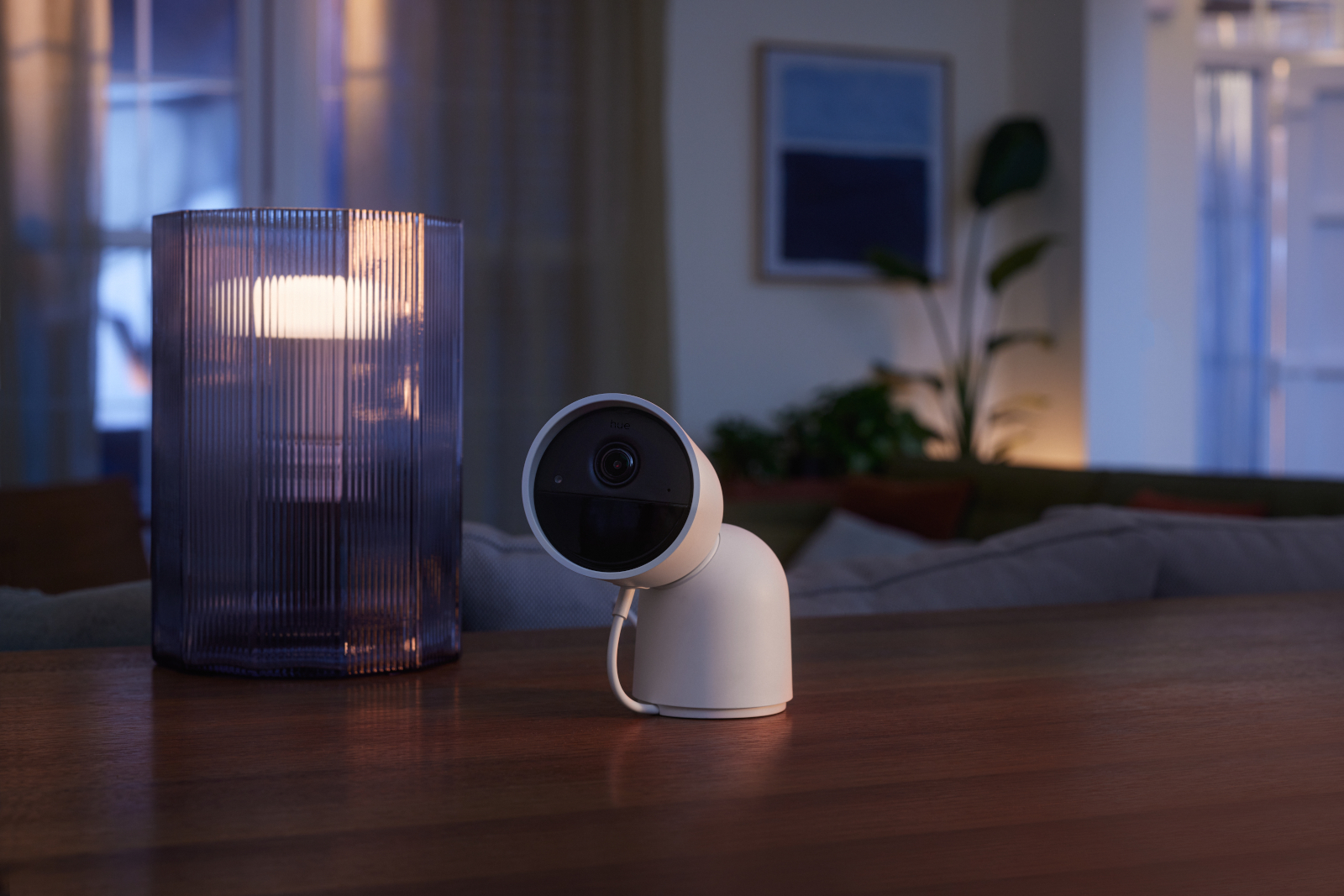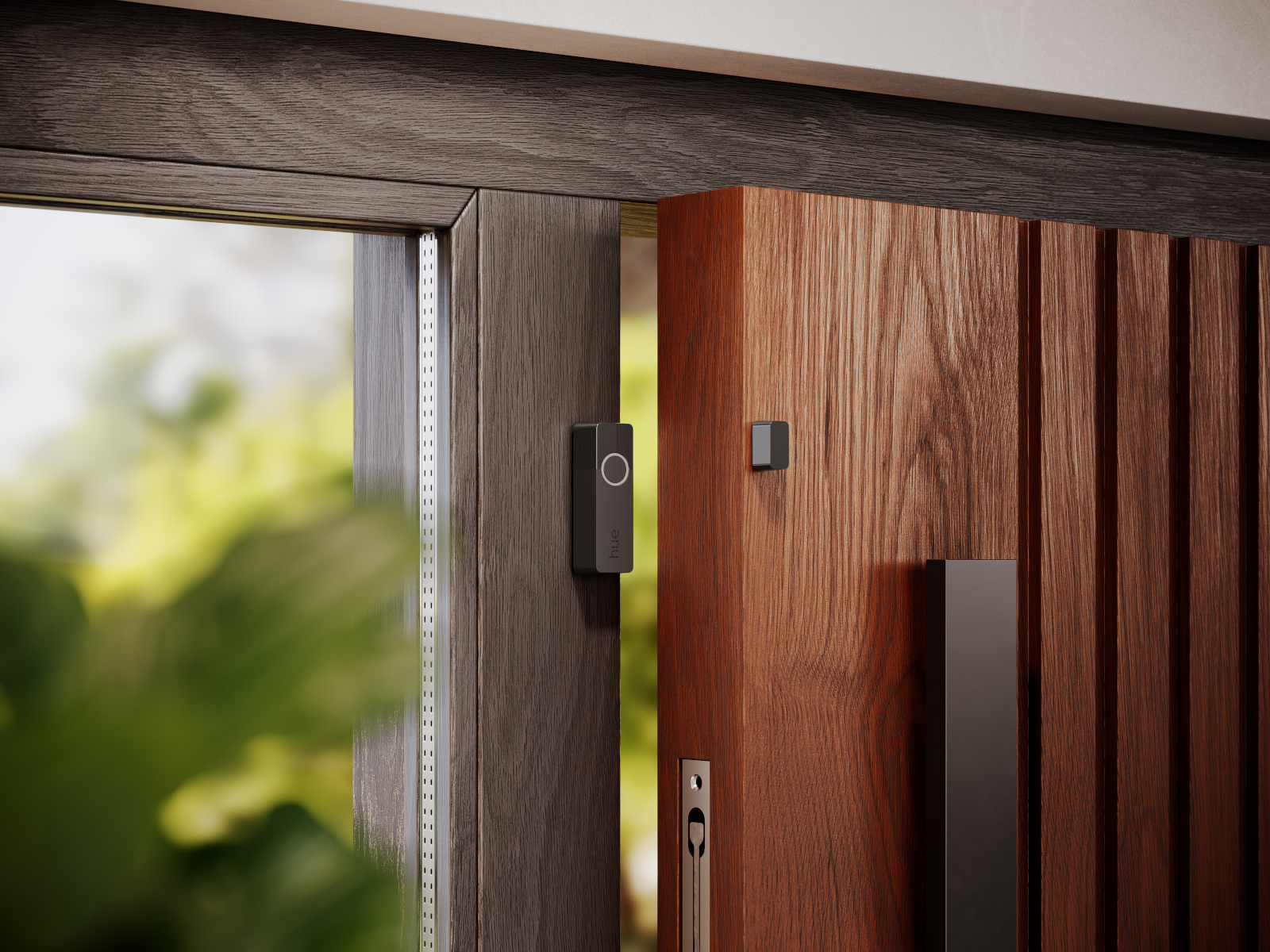Philips Hue’s entry into the home security space is a bright idea — here’s why

Widely considered one of the pioneers in smart lighting, Philips Hue is branching out to tackle the DIY home security space. The company’s introducing a versatile indoor/outdoor security camera, contact sensors for your doors and windows, floodlight camera that glows red, and a revamped app to keep home owners informed on what’s going on.
It’s a logical move for Philips Hue because these new home security products work more seamlessly with the company's line of smart lights. And this isn’t the first time we’ve heard about companies in the smart home space diversifying their portfolios by branching out to other categories.
For Philips Hue, however, it’s a bright idea that gives existing users even more options to remain in the Philips Hue ecosystem. We know that Philips Hue makes some of the best smart lights around, but these new additions could be worthy enough to be a contender for the best security cameras.
Mount Philips Hue Secure cameras on your lawn

One intriguing quality about the new Philips Hue Secure cameras is that you could technically stake them down to your lawn. The $200 1080p camera works indoors and outside because it’s battery powered, so you have the flexibility of choosing where to mount it — including your lawn via the optional secure camera mount with ground spike. There’s a wired version of the security camera as well at $200, which can be used with the desktop stand so it can be easily set inside of the home.
If you really want to deter intruders, the Philips Hue Secure floodlight camera should make them rethink their next move: it can blanket an entire area in any color of your choosing — including red — when the alarm is triggered through the Philips Hue app. The floodlight shares a lot of similarities with the battery powered camera, with the exception of that large floodlight and slightly higher $250 price.
These new security cameras are meant to work more seamlessly with existing Philips Hue smart lights you might already use. Other smart features include their ability to detect pets, people, and packages, along with two-way voice chat and end-to-end encryption.
Protection for your entryways

If you feel security cameras are too invasive in the home, you can still get some peace of mind assurance with the Philips Hue Secure contact sensors. They can be placed in pretty much any entryway, including doors, windows, and even other openings around your home, all while providing users with notifications whenever they’re triggered.
Get instant access to breaking news, the hottest reviews, great deals and helpful tips.
Automations are the center of this ecosystem because you can create one wherein the lights in your home could be turned on whenever these contact sensors are triggered. Furthermore, you could set another automation for the security cameras to start recording. These contact sensors will sell for $40 and will be available this fall.
Refreshed app experience

These new Philips Hue Secure products all converge in the Philips Hue app, which is getting a makeover to accommodate the new Security Center portal. Users will be able to use the refreshed app to set activity zones with the security cameras to reduce unwanted false triggers, sound on the siren in the cameras, and even the ability to call a trusted contact or local authorities.
However, these extra features come at a cost with two subscription plans. The Philips Hue Secure Basic plan costs $3.99/month for a single camera and features 30-days of video history, while the Philips Hue Secure Plus plan extends video history to 60 days for $8.99/month for multiple cameras.
This new app experience is actually important because it makes setting up automations a breeze. If you’ve ever tried that process using Google Home or Alexa with a mashup of smart home gadgets, you know how confusing it could get setting up all of the parameters in order to have everything work flawlessly. Even though this would be a closed system that would be exclusive to just Philips Hue devices, it makes the process easier and all contained in one app.
More from Tom's Guide
- What security camera and video doorbell should I get?
- Bread machine vs oven — which is better?
- 7 ways to get rid of pigeons and keep them out of your yard

John’s a senior editor covering phones for Tom’s Guide. He’s no stranger in this area having covered mobile phones and gadgets since 2008 when he started his career. On top of his editor duties, he’s a seasoned videographer being in front and behind the camera producing YouTube videos. Previously, he held editor roles with PhoneArena, Android Authority, Digital Trends, and SPY. Outside of tech, he enjoys producing mini documentaries and fun social clips for small businesses, enjoying the beach life at the Jersey Shore, and recently becoming a first time homeowner.
